Cats have fur, and it gets everywhere. That’s the truth of it. We love our furballs, but sometimes the actual furballs that they make can be pretty challenging to deal with. In smaller spaces such as an apartment, this problem is exacerbated due to a lack of space unless you have a cat breed that doesn’t have any hair.
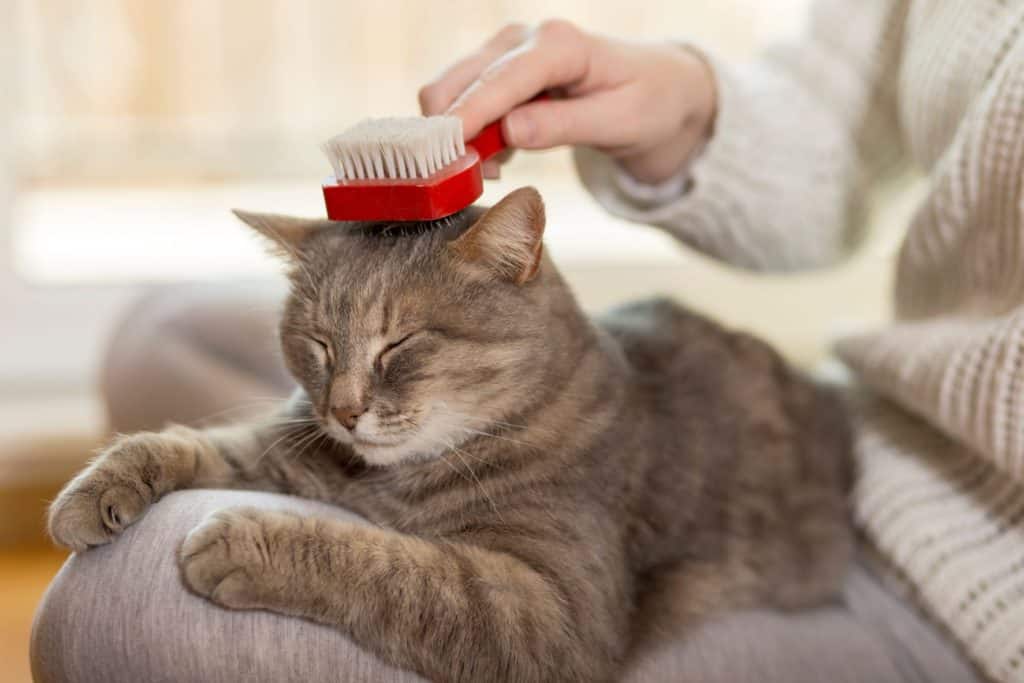
So how do you effectively control cat shedding or hair indoors? Here are strategies ranked most effective to moderately effective to manage cat hair/shedding:
- Shedding Prevention – Attack the source of the shedding by keeping your cats well groomed and healthy.
- Passive Hair Management – Leverage home appliances/devices to keep the air fresh and passively remove hair that’s either in the air or on the ground.
- Active Hair Management – Use the traditional methods of using sticky rollers, vacuums, etc. In some cases, even shaving their cat (not for the faint of heart).
Shedding happens, and it’s just part of the job as a cat butler. However, there are ways to make our lives easier. This article will extensively look at how cat owners can deal with hair and fur in their homes.
Reducing Cat Shedding & Cat Hair Management Solutions
All animals will shed a bit of hair every day. It makes sense that they would shed more. Therefore, having a plan or strategy for dealing with cat hair and dander is essential to keeping our living space clean, healthy, and neat.
1. Shedding Prevention (Attacking The Source)
Sometimes, the best solution is to prevent the problem from happening in the first place. Preventing shedding from your cat comes down to two main factors, your cat’s condition and how often you groom them.
- Grooming is the most basic but one of the most effective ways to prevent shedding. Attack it while it’s still on your cat and hasn’t gotten on any clothes or furniture! Grooming/brushing my cats is something I do every week. Being able to remove the fur before it gets a chance to get on anything makes a significant difference. Longer-haired breeds may need to be brushed more frequently but it’s a very inexpensive and simple way to help decrease the amount of fur being shed by your cats!
- A healthy, happy cat is a cat that doesn’t shed or lose as much hair. If you’ve ever seen a sick, scared or stressed out cat, you might notice that they’re always disheveled and surrounding them is a pile of hair. Rapid shedding is a normal physiologic response for cats. There are loose hairs called telogen hairs, that dislodge themselves when they encounter a frightening or stressful situation.
2. Passive Cat Hair Management (Automatic Cleanup/Removal)
Passive cat hair management strategies involve using appliances/devices you likely already have. Two handy home appliances are the air purifier and air humidifier, and having one or the other will already make managing cat hair a lot more manageable. When a cat or animal sheds, the fur/hair is so light that it flies in the air briefly before landing somewhere in the home.
- Air purifiers are a great low effort but highly effective item to combat cat odor and hair! Air purifiers not only take out the hairs floating around, but also dander and other particles that could be not-so-great to breathe. Some air purifiers (like the one recommended below) also removes odors.
- An air humidifier is something that’s not really thought about but it can really help alleviate a cat’s rate of shedding their fur. Air humidfiers are usually used when the air is super dry which causes skin irritation or cracks. Of course, cats are also affected by dry air, especially during the winter months. This not only causes the hairs to be looser but also, cats will scratching and poke at their skin because it’s itchy. Additionally, the higher amount of water content in the air will cause particles and hair to drop to the ground faster. This has the added benefit of keeping the air fresher to breathe.
3. Active Cat Hair Management (Direct Clean-Up/Removal)
The last and most basic method to deal with your cat’s shedding is active hair management. Cleaning up hair is probably the most direct method butlers use to shedding. It’s, of course, effective, but nobody wants to do it. Here are the most typical methods that cat butlers will employ:
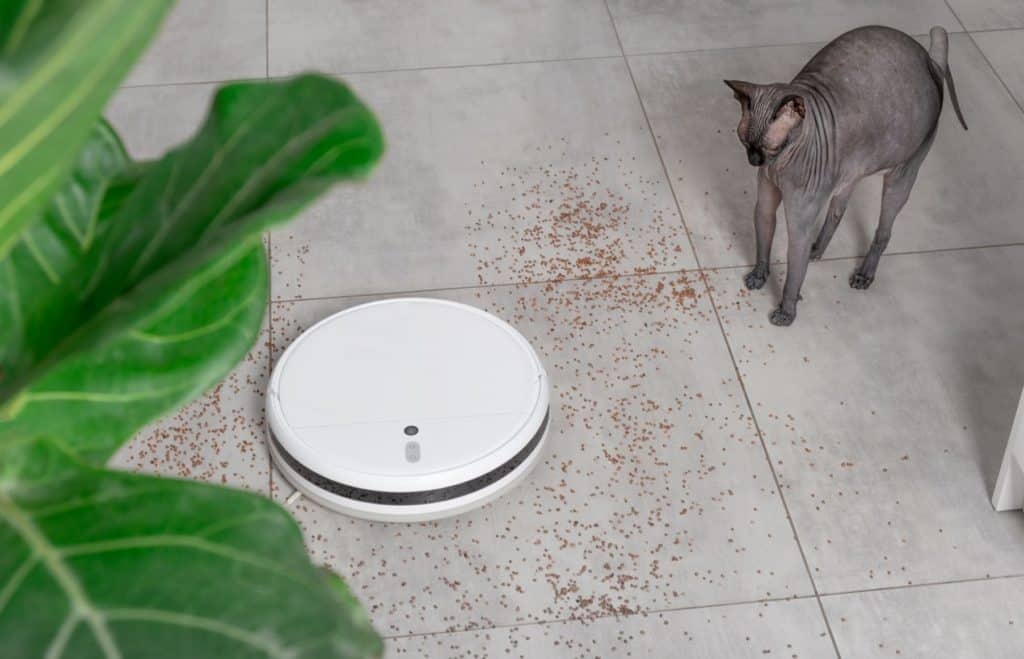
- Sticky rollers for the quick jobs. If you’re late or just need to remove a small area of hair and fur? Sticky rollers are the one of the job. Just a couple rolls and it’ll be able to remove the majority of hair and particles from clothing and furniture!
- Vaccuum cleaners for the deep cleans. Vacuuming isn’t the most fun thing to do (maybe it depends on the person), so I generally want to minimize the time I vacuum. However, these days with wireless and robotic vacuums, it’s a lot easier to do so. For a cat owners, while robotic vacuums aren’t totally necessary, it’s definitely worth the investment if you have more than one cat (see the sections below for the tools that I recommend!).
Can You Shave Your Cat To Avoid Shedding?
Shaving has the most effect (of course) in terms of shedding. Your cat barely has any hair, so that they won’t be shedding any time soon! Shaving can be a pretty stressful process for both you and your cat. However, shaving can be done quickly and without much pain or stress if you follow these guidelines.
- Don’t completely restrain your cat, work with your cat while it’s on the floor
- Pull the skin taut and watch for sensitive areas such as the nipple
- If the cat dislikes a certain area, do another area and return to the sensitive area for later
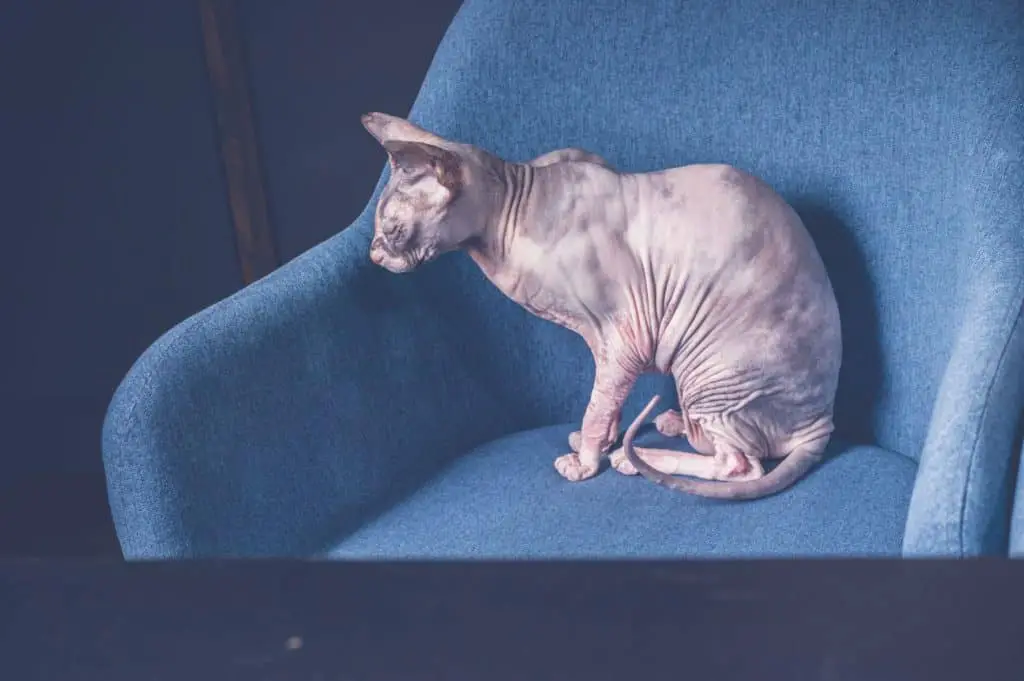
While shaving might seem like an extreme option, it can be beneficial in some situations, depending on the cat. Cats with extremely long or fluffy hair have more difficulty grooming themselves.
My Scottish-Straight Rosie has this problem. It’s almost impossible for her to groom herself properly, and then she gets hairballs. So for me, I have to brush her frequently, and when it gets severe, I need to shave her.
What Type of Cat Sheds The Most?
While we might think that some cats might shed more than others, it’s going to depend on a lot of factors. One of the main factors is color. When they shed, cats with darker coats are a lot less noticeable than a cat with a lighter-colored coat. So these are the types of fur or hair that we notice the most:
- Longer-haired cats will be much more noticeable than short-haired cats. You will find that short-haired cats shed the same amount as long-haired cats. It’s just that longer strands of hair and fur catch attention quickly and bunches together more easily.
As a result, we notice the longer strands of hair first and it tricks us into believing that longer-haired cats shed more. In reality, it’s just a matter of perception. So when choosing a breed that sheds “less” it’s best to avoid longer-haired breeds such as Persians or Maincoons as their hair will be very noticeable when shedding. - Lighter-colored cat coats are much more noticeable than darker coats. Imagine this, you’re about to go outside and you notice your dark pants are covered in white fur. You groan and frantically look for a sticky roller. When you actually go and try to remove those white furs, you realize there’s more than just white fur attached to your clothes (if you have more than one cat).
When white-haired cats shed, it seems to get everywhere. Other cats are shedding too but it’s just because we notice it more. In general, people own a lot of darker colored fabrics and materials so it’s super easy to see the white fur amongst everything else. - Cats fur/hair will vary in density and thickness. For example, a Russian Blue cat’s fur is super dense, much more than other cats, thanks to its double coat. Whenever I am brushing Ash (my Russian Blue) a lot more loose hair comes out than if I brush any other cat. Also, some cats have thicker strands of hair making it more noticeable as well. Bengal cats have very thin strands of hair, so it’s a bit more difficult to notice when they shed.

If I were to rank which cat hairs are the most noticeable when shedding, from most to least, would be:
Long-haired cats > lighter-colored coats > denser/thicker coats
When Does A Cat Shed The Most?
Shedding is a natural part of any healthy cat. However, there are times when it happens at an increased rate caused by external factors such as season, diet, and health problems.
Shedding Because of Season
In the wild, cats have two seasons in which they shed the most: spring and fall. This is to prepare for the coming season, whether to lose their heavy coat for the warmer weather or get rid of loose old hair for the new hair to grow in.

Indoor cats may or may not follow this shedding period because they don’t experience changing seasons (as their indoor environment never really changes). So they might be shedding at random times of the year. From my observations, it does seem that my cats shed more during the springtime. So I increase my frequency of grooming and cleaning.
Shedding Because of Diet
Diet is a big part of a cat’s health, and a cat’s coat reflects how healthy they are. Cat’s are obligate carnivores meaning they must eat meat, and the more actual meat in their food, the better. While we would love to feed our cats fresh raw food every day in an ideal world, it is sometimes not possible.
Making sure, however, that our cat’s dry food is grain-free and as high in protein as possible keeps their coat healthy and minimalizes shedding. Additionally, it’s also recommended that it contains fatty acids and oils from fish rather than any other plant alternative.
Shedding Because of Health and Stress
Before doing anything, it’s generally a good idea to take your cat to the vet if they are shedding a lot more than usual to make sure they don’t have any underlying disease or condition. Again, as a cat’s coat reflects health, a ragged-looking cat is generally a sick cat. So shedding might be one of the symptoms that something is wrong.
Stress is also a factor. It could be dealing with territorial issues or being bullied by another cat. As a result, could be shedding more hair due to anxiety or nervousness.
Recommended Equipment/Supplies For Cat Hair/Shedding
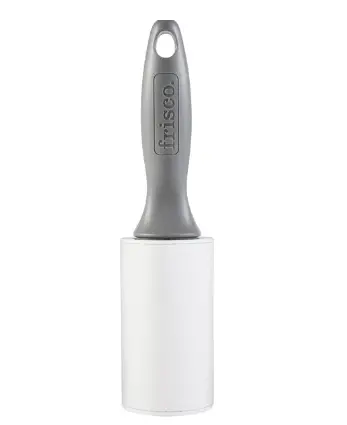 Frisco Cat/Dog Hair Roller
Frisco Cat/Dog Hair Roller
If you have a cat or any pets, lint rollers will save your life. Clean up cat hair quickly and easily from clothes and furniture. I've gone through so many but it's essential when you're living with animals.
 Germ Guardian HEPA + Charcoal/Carbon Filter
Germ Guardian HEPA + Charcoal/Carbon Filter
This air purifier is great for not only particles in the air but there is a carbon filter for smells and a UV light to help kill airborne germs and viruses. It also an antimicrobial agent that inhibits the growth of mold, mildew, and other odor-causing bacteria on the filter's surface.
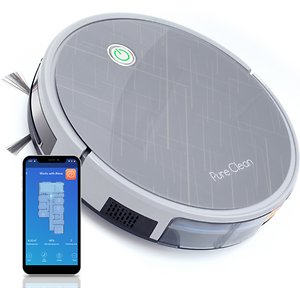 Pure Clean Smart Robot Vacuum W/ Remote Control
Pure Clean Smart Robot Vacuum W/ Remote Control
Keep your home free of dust, dirt, and pet hair with the Smart Robot Cleaning Vacuum with Remote Control from Pure Clean. It has dual spinning side brushes that capture dirt and lift debris into the bagless waste bin and an integrated dust filter for easy disposal. This self-programmed system features gyroscope technology to optimize cleaning routes and clean up in areas where your furry friend hangs out with anti-fall and anti-collision sensors for protection. Great for lazy butlers and has great reviews!
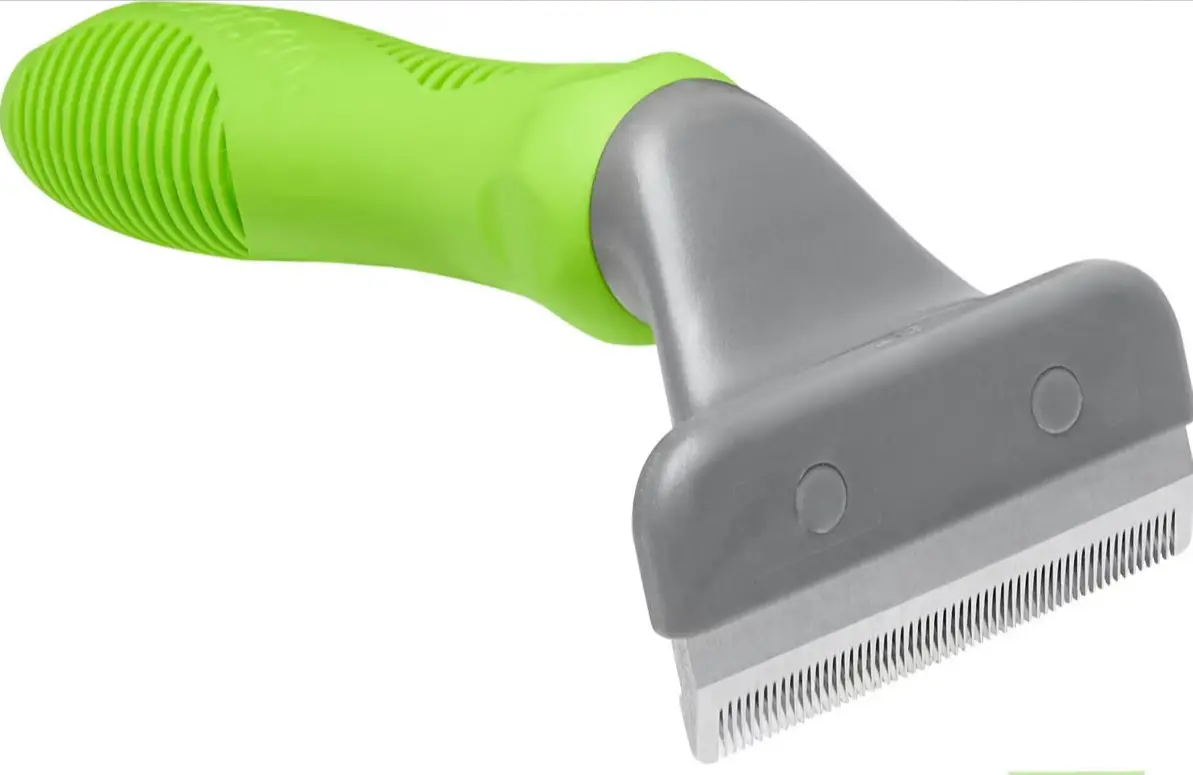 Frisco Deshedding Dog & Cat Brush
Frisco Deshedding Dog & Cat Brush
Some brushes can be a bit too rough for our cats and could overstimulate them causing discomfort. This one is super gentle and is super effective at removing loose furs, mats, and tangles.
